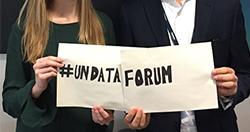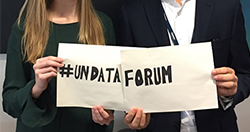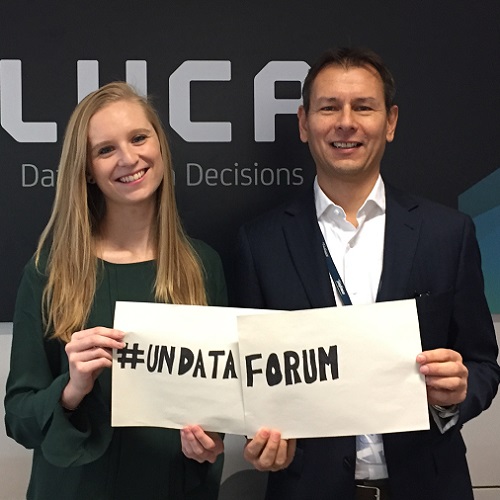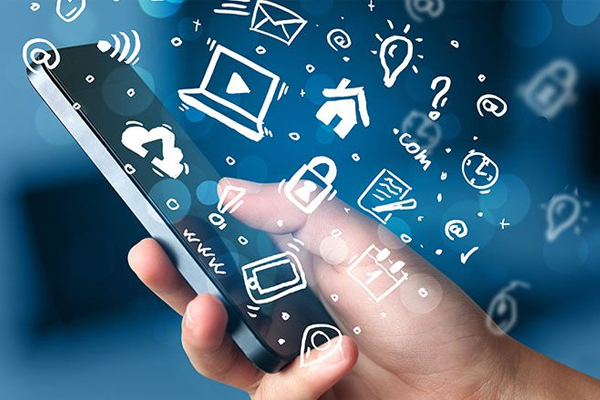This article first appeared on the Untied Nations World Data Forum website.
The smartphone has changed our world as we know it, with 79% of people between 18 and 44 having their devices within reach 22 hours a day. This new extension of our hands has become a “digital echo” of our real behaviour, with thousands of mobile applications accelerating our data generation and providing a wide range of companies with a scary amount of data on who we are, where we go, what we do and why we do it.
In the era of “Big Data”, an innocent online search for some golf clubs turns into a commercial pursuit to convert interest into investment – which has started to cause some alarm amongst consumers. Over the past few years, an increasing number of questions around privacy and the value of our data have come to the forefront of political debate. Cyber attack headlines and aggressive advertising in the top of our minds have led people to become more aware about the negative use of their data, often neglecting the many positive ways in which data is being used around the world.
The mainstream media tends to focus on the Internet giants of this world and how they exploit data. However, telecommunications companies also have access to incredibly insightful data sets. The telcos of this world are increasingly finding ways to have a social impact with the data created by their customers, who spend an average of 145 minutes per day tapping and swiping away.
Of course, mobile behaviour varies immensely in different geographies, and the extent of this social impact depends on how developed the country of analysis is. For this reason, projects on Big Data for Social Good based on mobile data have tended to focus on developing countries, targeting the alarming problems linked to Sustainable Development Goals 1 and 2 – “No Poverty” and “Zero Hunger”.
With the UN World Data Forum taking place in Cape Town from 15-18 January, 2017, we decided to take a look at 7 projects, linked to 7 different Sustainable Development Goals to underline just how far mobile data can go in monitoring the progress we make on the world’s biggest challenges:
[[[image 2-small left]]] GOAL 1: NO POVERTY – Poverty Analysis in Senegal (Orange and the State University of New York at Buffalo USA).
By using mobile phone usage data and regional level mobility information, Orange and the State University of New York are creating poverty maps showcasing a wide range of perspectives which can be provide decision makers with better insights to eradicate poverty in the most efficient way possible in Senegal.
[[[image 3-small left]]] GOAL 3: GOOD HEALTH AND WELL BEING – Mobility Data Analysis in Mexico during the H1N1 Flu Outbreak (Movistar).
Scientific experts in the Telefónica Research and Development team used their Smart Steps technology to understand the efficiency of government measures during the H1N1 flu outbreak of 2009, which was estimated to have affected up to 375,000 people. Human movement directly accelerates the spread of diseases so they analyzed mobility patterns before and after the government advised citizens to stay at home, uncovering that only 30% of people stayed at home, whilst 70% barely showed any changes in their day to day behaviour. In the future, this data-driven approach to handling health pandemics will inevitably save lives and help governments to optimize their response.
[[[image 4-small left]]] GOAL 4: QUALITY EDUCATION – Using mobile data to increase the reach and effectiveness of digital education for the children that most need it (Profuturo, Telefónica)
Profuturo aims to bring digital education to millions of children who currently are deprived from quality education. The program captures data from every interaction with the platform for all students and teachers, as well as contextual data about the country, region, etc. With this mobile data, learning analytics takes place to predict the success of students, teachers and projects. The project has started in Angola where the education program is now offered to 8000 children. It is now being extended to other countries in Africa as well as in Central and South America.
[[[image 5-small left]]] GOAL 7: AFFORDABLE AND CLEAN ENERGY – Using Mobile Data for Electrification Planning in Senegal (University of Manchester, Ecole supérieure polytechnique de Dakar UCAD and the Santa Fe Institute)
Mobile phone data has proved to be an accurate proxy of the energy needs of populations in Senegal, allowing telecommunications operators to help utilities providers build bottom-up demand models. This is especially important where there is scarce information on the constantly evolving energy needs of people and companies in developing countries. In the future, mobile data will be crucial in helping governments and utilities providers to decide where to invest in renewable energies – making them more affordable for citizens.
[[[image 6-small left]]] GOAL 11: SUSTAINABLE CITIES AND COMMUNITIES – Crime Prediction in the city of London in the UK (02 Telefónica and the University of Trento)
Academic and mobile data experts used anonymized and aggregated mobile data and police data to predict crime hotspots in London. Identifying them with an accuracy of 70%, 6% higher than when police data was used on its own. The analysis showed that some components of mobile phone data are more important than others. For example, the data about the phone’s home location showed a strong correlation with crime patterns. In the future, these insights could be invaluable to law enforcement authorities in making our cities safer.
[[[image 7-small left]]] GOAL 13: CLIMATE ACTION – Using Mobile Data to measure CO2 emissions in Nuremberg, Germany (O2 Telefónica, Teralytics and the South Pole Group)
Local governments are facing immense challenges with accelerating rates of CO2 emissions causing serious air pollution problems in cities. The first and most important step to combat this is to collect accurate data to identify where the major air pollution hotspots are, ahead of investing in solutions such as improved public transport or new infrastructure. In Nuremberg, local government decision makers are working with O2, Teralytics and the South Pole Group to understand mobility patterns using mobile data, extracting insights on traffic which allow them to make predictions on pollution in a more cost-efficient way than surveys or sensors.
[[[image 8-small left]]] GOAL 17: PARTNERSHIPS FOR THE GOALS – The Open Algorithms Project
In order to overcome the challenges facing private sector organizations wanting to use their Big Data for Social Good, the Data-Pop Alliance, Massachusetts Institute of Technology, Orange Group, the World Economic Forum and Telefónica have come together in the Open Algorithms Project. OPAL will consist in an open platform and algorithms that can be run on the servers of partner companies behind their firewalls to extract key development indicators for society, in a privacy preserving, commercially sensitive, stable, scalable and sustainable manners. Hopefully, this cutting-edge approach to Big Data will allow for more private and public sector partnerships to thrive, providing better and deeper insights to policy makers around the world.
So, it’s clearly not all doom and gloom when it comes to data exploitation. In fact, many innovation teams in private and public sector organizations are regularly lobbying to implement disruptive data projects with a social impact – as we can see in the examples above. However, to make Big Data for Social Good a real success, it is fundamental to find sustainable business models which allow these data analyses to become recurring projects, not just one off pilots or exploratory academic work. Taking a data-driven approach to the world’s biggest problems is fundamental and regular measurement of our collective progress on the 17 Sustainable Development Goals is crucial in enabling policy makers to mould their decisions in the most responsible and effective way possible.
Florence Broderick is a Strategic Marketing Manager in Telefónica’s Big Data unit, with a specific focus on Big Data for Social Good in line with the Sustainable Development Goals. She also co-created the Telefónica Millennial Network to bring together and engage young talent across her company. The network now has 87 ambassadors in 13 countries & 2000+ members globally.



